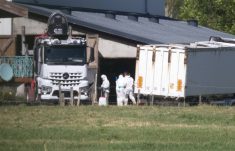CHICAGO, Sept 23 (Reuters) – U.S. feedlots in August brought in 15.0 percent more cattle compared with a year ago, the U.S. Department of Agriculture said on Friday, topping average trade estimates and the highest for the month in four years.
Analysts attributed last month’s sizable placement increase to ranchers who moved cattle to market earlier than they would have otherwise as prices deteriorated during the second half of August.
Feedyards finally retrieved cattle fattened outside of feedlots for several months on healthy pastures. Less-costly corn also reduced costs for cattle feeders.
Read Also

U.S. livestock: Cattle fall sharply as Trump says he’s working to lower beef costs
Chicago cattle futures fell sharply on Friday after U.S. President Donald Trump said his administration was working to lower the…
There were two extra days to process cattle in August than a year ago, analysts said. They also noted that last month’s placements seem high in comparison with August 2015’s record-low placement result.
Friday’s USDA report showed August placements at 1.879 million head, up 15.0 percent from 1.632 million last year. That was well above analysts’ average forecast of 1.838 million and the biggest for the month since August 2012 at 2.007 million head.
The government put the feedlot cattle supply as of Sept. 1 at 10.135 million head, up 1.0 percent from 9.986 million a year ago. Analysts, on average, had forecast an increase of 1.1 percent.
The government said the number of cattle sold to packers, or marketings, grew 18.0 percent in August from a year ago, to 1.868 million head.
Analysts projected a 16.7 percent increase from 1.588 million last year.
“There’s a lot of feed out there at lower prices that helped offset input costs at feedlots,” said University of Missouri livestock economist Ron Plain.
He said the placement of cattle under 600 pounds was the only category that declined, while placement of heavier animals increased, which reflects the prolonged period of good pasture conditions this year.
“We kept a lot of cattle out of feedlots on grass and as they got bigger we eventually moved them into feedlots,” said Plain.
Analysts viewed the report as mildly bearish for CME live cattle on Monday, with investors likely to focus more on prices for wholesale beef and market-ready, or cash, cattle.
“Considering that the placement number was compared to a record-low number a year ago, and we had two extra days to market cattle this year, you’re talking about a report that may only be a bit negative for futures on Monday,” said U.S. Commodities analyst Don Roose.














